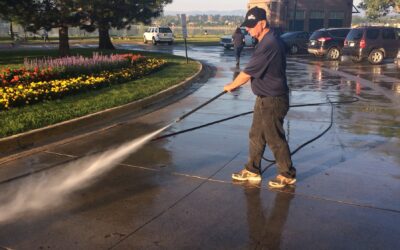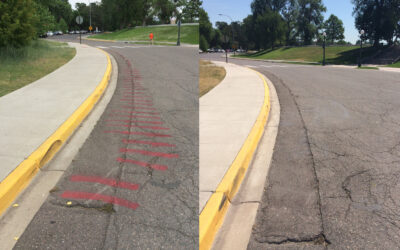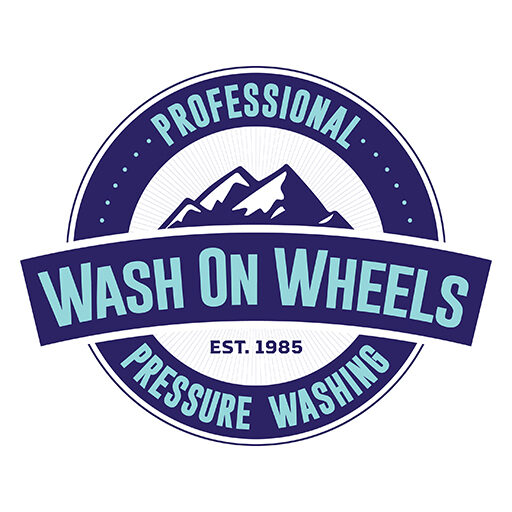Updates To Colorado Water Quality Laws

Image designed by Freepik
Colorado Water Quality Laws are constantly changing.
And most people don’t realize how comprehensive the water quality laws in this state are. But the snow pack in the Rocky Mountains is the major water source for much of the United States.
The runoff from the melting snow fills the rivers that flow east to the Mississippi River and west all the way to California. And there are seven water courts in Colorado to make sure everyone is treated fairly – including all the people downstream – and gets their share of water.
On many of the pressure washing jobs we do, we are required to do water recovery to prevent the wastewater from running off site and getting into the storm sewers. So we stay on top of the water laws, especially those that concern runoff.
When we got the notice that the Colorado Department of Transportation (CDOT) was putting out a bid for a Long Range Master Plan (LRMP) for Municipal Separate Storm Sewer System (MS4) Permanent Water Quality (PWQ), we read through it carefully.
You never know how potential changes in water quality laws might affect our pressure washing business – and those of our clients. Many of them weren’t aware of the need to recover the wastewater from pressure washing until we informed them.
Our clients expect us to be on top of all the laws – including water quality – that affect them so they don’t have to worry about it. And we take the responsibility for protecting our clients very seriously. We reprinted the CDOT proposal below to show all the detail and different agencies involved to keep everyone informed.
If you need a pressure washing business that stays on top of the laws so you don’t have to worry about them, give us a call.
Colorado Department of Transportation (CDOT) Municipal Separate Storm Sewer System (MS4) Permanent Water Quality (PWQ) Long Range Master Plan (LRMP)
Scope of Work
The purpose of this project is to develop a permanent water quality long range master plan (LRMP) for treating stormwater in CDOT MS4 Right of Way (ROW) that will:
- Function as a master plan within the context of the CDOT’s MS4 area water quality requirements
- Be compatible with CDOT’s draft MS4 permit and proposed New Development and Redevelopment (NDRD) watershed-based program, including where there is overlap, or as directed by CDOT;
- Utilize existing water quality master plans, watershed or municipal stormwater plans as much as possible;
- Identify major stakeholders;
- Encourage partnerships with other municipalities or stormwater/watershed entities; and
- Identify areas not covered by existing water quality master plans and suggest types of reasonable treatments for these areas.
Throughout this document CDOT’s Permanent Water Quality Long Range Master Plan is referred to as LRMP and master plans created by others are referred to as Plan(s).
Definitions
CDOT Permanent Water Quality Long Range Master Plan (LRMP):
The master plan referenced here applies to CDOT actions and management of stormwater affecting and flowing from CDOT facilities and is an overall plan into which the details of other specific plans are fitted, providing overall guidance for future CDOT actions and improvements affecting an evolving watershed. It is generally a regionally conceived plan based on examination of the total CDOT system that, with the aid of public participation, bridges a variety of perspectives and jurisdictional boundaries. It is a road map for CDOT’s future drainage and flood control watershed actions, irrespective of political boundaries. It centers on CDOT’s MS4 boundary as it is impacted, and impacts, overlapping agencies.
CDOT’s LRMP accounts for CDOT’s part in other entities drainage master plans for urbanizing areas, which is helpful to both the developer and the municipality. This is why it is critical that, as applicable, CDOT’s LRMP incorporates local drainage master plan elements, goals, and objectives. In areas that do not already have a master plan, CDOT needs to develop suggestions and goals for types of reasonable treatments in these areas. The LRMP drainage elements must be based on good environmental design techniques and address the goals and needs of the urban area. It should not be prepared only on the basis of drainage hydraulics and not be limited to moving stormwater runoff from one location to another. Instead, it is critical that it also include coordination and collaboration with local city, county and other agency officials. The LRMP will only be effective if it is coordinated with planning for open space, transportation, water quality, urban wildlife, and other urban considerations affected by CDOT’s stormwater. Therefore CDOT’s LRMP needs to be coordinated and compatible with overlapping and adjacent jurisdictions.
Task 1: Project Management
1.1. In coordination with the CDOT Project Manager (PM), identify dates, times, and locations for project management meetings. These meetings will include, at a minimum, a kick-off meeting and close-out meeting at CDOT Headquarters. Other meetings will include progress/review meetings at major milestones with the project Task Force created by the CDOT PM. Up to four other meetings may be scheduled as necessary to address any issues that may arise. The Consultant will facilitate all meetings. The role of the CDOT Task Force will be to provide technical expertise. The CDOT PM will provide direction and policy guidance to the Consultant project team. In addition, the Task Force will review and approve project deliverables as directed by the CDOT PM. The CDOT Project Manager will be responsible for forming this Task Force prior to project initiation. Meetings will be assumed to be in-person meetings unless not practicable.
1.2. Prepare a Project Management Plan (PMP) at the beginning of the project for the purpose of defining the tasks, schedules and resource requirements needed to complete CDOT’s MS4 Areas Permanent Water Quality Long Range Plan (aka LRMP). The PMP will include organization of the Consultant team, including roles and responsibilities and contact information; project tasks and related schedules; project budget on a task-by-task basis; meeting dates and schedule.
For deliverables; coordination procedures; and any other project management items proposed as necessary by the Consultant.
1.3. Develop a communication plan section in the PMP for establishing effective communication mechanisms within the project team (Consultant team, Task Force, other Agency visits and for Region site visits, etc). The communication plan will identify the schedule, format and other details related to communications in this project. The communication plan will define the means by which input from regions, other agencies and stakeholders will be solicited and obtained. The communication plan will become a part/section of the PMP.
1.4. The consultant team shall include a Hydrologist Specialist and Hydraulic Engineer. Additionally team member skills should include experience in water quality master planning and stormwater Municipal Separate Storm Sewer System (MS4) Program development and/or implementation. Team members must have sensitivity to politics and understand the importance of relationships. All schedules shall include a timeline with milestones for the tasks shown and required interim steps. The schedule(s) showing milestones shall be prepared at the beginning of the project and shall be revised as directed by the CDOT Project Manager. Any such additional items proposed by the Consultant will require prior written approval by the CDOT Project Manager. The Consultant Project Manager in coordination with CDOT’s Project Manager will be responsible for directing all project activities.
1.5. Distribute meeting agenda and materials by email no later than 1 week prior to each meeting. All meeting materials shall be provided to the CDOT Project Manager for review at least 3 days prior to distribution to the Task Force.
1.6. All deliverables in Tasks 1 through 5, including meeting minutes with Action Items identified (and an associated timeline), will be provided to the CDOT Project Manager as drafts for review. It is anticipated that all submitted drafts will be technically reviewed by the consultant prior to submittal to CDOT. Unless directed otherwise, the Consultant will use CDOT’s comment response matrix (see attached Exhibit A) to formally respond to all comments made on draft deliverables.
CDOT anticipates two reviews will occur with each deliverable – initial review and 2nd review to ensure comments were addressed. The PM, and Task Force if directed, will review all deliverables for Tasks 1 through 4 and a wider audience may review Task 5. Once comments have been addressed, the deliverables will be finalized. All final deliverables will be submitted in both .pdf, .doc/.xls and GIS formats as appropriate.
1.7. Provide monthly invoices with a summary of the activities being billed.
Task 1 Deliverables:
- Project Management Plan – Project Schedule – Project contact list – Communication plan
- Meeting agendas, minutes and materials
- Monthly invoices for accomplished tasks 105 with summary
Task 2: Collect Data
2.1 The consultant will collect existing stormwater master plans and other relevant BMP or drainage information (referred to as Plans from this point forward) that overlap or feed into/away from any of CDOT’s MS4 Area ROW including but not limited to those developed by:
- CDOT (see existing BMP locations and drainage areas treated)
- Urban Drainage and Flood Control District (UDFCD)
- Cherry Creek Basin Water Quality Authority
- Southeast Stormwater Authority (SEMSWA)
- other MS4s, including City and County of Denver, and
- Colorado Springs For bidding purposes, assume 21 contacts with one day of data collection for each contact, not including travel.
2.2 Develop a comprehensive list of Plans as consistent with master planning requirements and the draft CDOT MS4 Permit/Proposed NDRD Program, as they overlap or otherwise directed, and identify opportunities for partnerships.
Task 3: Analyze Data and Generate Plan
3.1 Generate a Stakeholder Plan contact list of all potential major partners and agencies with Plans, as approved.
3.2 The Consultant shall assess plans (from Task 2 above) for applicability to the draft MS4 Permit/NDRD Program as they overlap or as otherwise directed. Other elements to consider or highlight include, but are not limited to:
- Upstream and downstream storage
- System sizing: note whenever the system crosses jurisdictional boundaries (identify differences in sizing policies)
- Partnering opportunities
3.3 After analyzing the survey findings, the consultant shall present the Task Force with the options that best meet the needs of the draft MS4 Permit/ NDRD Program as they overlap, or as otherwise directed.
3.4 Identify which Plans exist now, which BMPs are under development or already planned for construction by others and any CDOT MS4 areas not covered by any Plan.
Task 3 Deliverables:
- Stakeholder and Master Plan contact list.
- A report identifying Plans (from task 2 & 3) and showing the CDOT ROW area treated by these Plans meet CDOT’s MS4 permit requirements and areas identified as requiring more treatment in order to show 100% coverage of all of CDOT’s MS4 area.
Task 4: Potential Opportunity Map
4.1 Identify plans, including planned and existing BMPs, which meet CDOT’s MS4 draft permit and NDRD program requirements, as they overlap, covering CDOTs MS4 Area. This shall include a GIS map depicting areas covered by these Plans (from Task 3) and areas left untreated by these Plans or existing BMPs. For the untreated areas affecting CDOT’s ROW (as identified in Task 3), add notes and GIS locational information, with the suggested type of PWQ treatment. Distinguish these untreated areas from those covered by existing 5 plans. Meta data shall include information source, plan/BMP owner, persons interviewed and other available information.
4.2 Organize map data into a compatible format (geodatabase) for CDOT GIS and coordinate with GIS staff to ensure that data and format are acceptable. Metadata will be compatible with OTIS and geodatabase will be designed to overlay the CDOT’s GIS layer of existing PWQ Areas Treated. CDOT will provide CDOT’s existing Areas Treated GIS layer for this task.
Task 4 Deliverables:
- GIS map of existing and potential Plan/BMP opportunities, in geodatabase format, in both hard copy and digital formats
- Contractor will digitally prepare data in a format compliant with CDOT’s GIS data standards, including: ‐ File Geodatabase containing spatial features ensuring that all are attributed properly ‐ Projection of data should be NAD 83 UTM ‐ Metadata compliant with FGDC standards
Task 5: Create a CDOT LRMP.
The consultant shall:
5.1 Meet with PM and other specialties, as directed by PM, to coordinate how this document should look and what information is required within it and how best to incorporate previous tasks.
5.2 Develop an assessment of areas covered by the proposed Plans for possible priority requirements.
5.3 Review existing Plan priorities, assess risk to state waters from stormwater flowing from CDOT MS4 Area ROW, review CDOT’s draft MS4 permit and Proposed NDRD Program (where conflict exists the draft permit supersedes the draft program) suggested prioritization of projects and prepare corridor or project priorities for the PWQ-LRP.
5.4 Present the information from this, and all of the above tasks as appropriate, in the PWQ-LRP.
Task 5 Deliverables:
- Outline of LRMP document
- Priority areas white paper
- PWQ-LRMP document Option: Provide separate costs for all elements of this task, as it may or may not be picked up, depending on overall cost of previous tasks and the total of this option. Research Technologies for Effective, Low Maintenance Watershed-level Treatment Facilities
The consultant shall:
- During interviews with stakeholders, ask for existing research or design technologies for how to best treat watershed-level flows effectively. If possible, identify treatment options that have low maintenance requirements. Regional facilities may have, maintenance issues, therefore this task shall also include research that addresses such issues. For example, a solution to rapid sediment build up in a regional facility may be addressed by building sediment traps prior to a regional pond, reducing maintenance frequency and increasing pond longevity. The interim maintenance can then be focused mostly on the traps, or something of that nature.
Option Deliverable:
- Complete a section for the final deliverable report that will be submitted separately as a draft for review regarding the pros and cons of various regional treatment designs in order to achieve the goals set forth in the draft CDOT MS4 Permit and Proposed NDRD Program as they overlap, or as otherwise directed. (e.g., treat transportation-related pollutants).
Pressure Washing After The Dragon Boat Festival
The Dragon Boat Festival in Colorado is the largest of its kind in the United States. And they needed our pressure washing service to clean up afterward. Cover Photo from http://www.cdbf.org/ Photo by Kathryn Scott, The Denver Post This was the 17th annual Colorado...
Grease Spill Cleanups At Restaurants Are A Fact Of Life
Grease spill cleanups at restaurants are a fact of life, no matter how careful people are. Everyone uses grease – in some form – to cook with, whether it's the spray on/no stick variety or large kettles of fryer grease used for french fries and onion rings. At home,...
Pressure Washing With Water Recovery To Remove Bike Race Markings From Roadways
After a recent bike race in Denver's City Park, we were called for pressure washing with water recovery to remove bike race markings from roadways. The 46th Annual City Park Criterium took place on June 3, 2017. The race organizers used marking paint to highlight pot...




